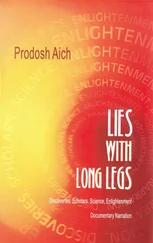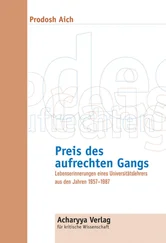What other evidence could have reached back to times when Greece was not peopled by Greeks, nor India by Hindus (Which people “ peopled ” Greece and India and how did Max Müller come to know this ? ) ? Yet these are the times of which we are speaking. What authority would have been strong enough to persuade the Grecian army, that their God and their hero ancestors were the same as those of King Porus, or to convince the English soldier that the same blood was running in his veins and in the veins of the dark Bengalese? ... There was a time when the ancestors of the Celts, the Germans, the Slavonians, the Greeks, and Italians, the Persians, and the Hindus were living together within the same fences, separate from the ancestors of the Semitic and Turanian races (That is it!) .
It is more difficult to prove that the Hindu was the last to leave this common home, that he saw his brothers all depart towards the setting sun and that then, turning towards the south and the east, he started alone in search for a new world. But as in his language and in his grammar he has preserved something of what seems peculiar to each of the northern dialects singly, alone, as he agrees with the Greek and the German where the Greek and the German seem to differ from all the rest, and as no other language has carried off so large a share of the common Aryan heirloom – whether roots, grammar, words, myths or legends – it is natural to suppose that, though perhaps the eldest brother, the Hindu was the last to leave the central home of the Aryan family (We shall have to scrutinise meticulously where, when, from whom Max Müller could have learnt which languages!).
The Aryan nations who pursued a north-westerly direction, stand before us in history as the principal Nations of North-western Asia and Europe. They have been the prominent actors in the great drama of the history, and have carried to their fullest growth all the elements of acting life with which our nature is endowed. They have perfected society and morals, and we learn from their literature and works of art the elements of science, the laws of art, and the principles of philosophy. In the continual struggle with each other and with Semitic and Turanian races, these Aryan nations have become the rulers of history, and it seems to be their mission to link all parts of the world together by the chains of civilisation, commerce, and religion. In a word, they represent the Aryan man in his historical character (Is this the message that the Aryan tribes, the Aryan people, the Aryan nations have been the most decisive actors in the great drama of history? Have they perfected human society and morals? Do we learn from their literature and works the elements of science, the laws of art, and the principles of philosophy? Is this the message that in the continual struggle with each other and with Semitic and Turanian races these Aryan nations have become the rulers of history?).
But while most of the members of the Aryan family followed this glorious path, the southern tribes were slowly migrating towards the mountains which gird in the north of India. After crossing the narrow pass of the Hindukush or the Himâlaya, they conquered or drove before them, as it seems without much effort, the aboriginal inhabitants of the Trans-Himalayan countries. They took for their guides the principal rivers of northern India, and were led by them to new homes in their beautiful and fertile valleys.”
*****
We get back to the issue of sources of information. In all standard books on history, on history of culture, on Indology published after1859 we find all those facts presented here by Max Mülleras referred to in the beginning of this chapter. On this fundament, Max Müllerhas integrated other perceptions on society and culture without any critical check-up of the validity of the assertions. In none of the standard books on these subjects published before1859, we find these facts presented by Max Müller. Therefore, we conclude that Max Müllerhas handed-down these facts for the first timein the literature on the Modern History, on Human Culture and on Indology. Thus, he is accountable for his sources.
There was no mention of the Aryan-raceprior to Max Müller. He was thus the discoverer or inventor of the Aryan-race as well. He did describe the physical features of the Aryans in comparison to the rest of humankind. The Aryans weretall, strong, fair skinned, fair haired, blue or grey-eyed. In 1859 photography was yet to be invented. When did he go to the land of Aryan-origin? When did he see “Aryans”? The land of Aryan-origin, so it is told by Max Müller, was to be Central-East Asia. It is handed-down that the Venetian Marco Polospent long years in that area in the 13th century. He has written a lot on what he had seen and experienced. Why did he not see the Aryans, why did he not write on the Aryan-Race?
We must find out how and when Max Müllerdiscovered these facts. It is undeniable that he is accepted as an authority on all these facets of ancient “History”, on “Religions”, on “Indology”, on “Philosophy” and on “Linguistics”. Even his claim to have acquired perfect command over the ancient Language called Sanskritis also universally accepted. He is also accountable on this issue.
A language does not travel. A language has to be transported by human beings. There are two ways. One travels to the land of that language, learns it and carries it to his land. Or one comes from that land and brings the language with him and also teaches it. We shall have to investigate how Sanskrit arrived in Europe and how European scholars of Sanskrit came to their knowledge of Sanskrit.
*****
As indicated before, we are simple-minded persons. Though we are products of the universally prevailing “educational” system created and spread by European Christians, somehow we have retained our simplicity. We practice calling a spade a spade. And we are in search of knowledge. We are too simple-minded to be able to believe. We always want to know. If we do not understand, we ask questions.
Our basic premise is:
“A good scientific theory should be explicable to a barmaid.”
We do not claim copy right for this wonderful and precise expression. This sentence is not ours. Had it been ours, we would not have claimed copy right any way. This sentence was formulated by a New Zealand-born physicist and chemist who became known as the father of nuclear physics. He is widely credited being the first "splitting the atom" in 1917 in a nuclear reaction between nitrogen and alpha particles, in which he also discovered (and named) the proton. If he could explicate his theories to a barmaid, we demand the same from all scholars in the humanities as well. We must demand from the scholars of all subjects to explicate their findings in a simple language. He was also awarded the Nobel Prize in Chemistry in 1908. However, we feel our New Zealand-born physicist and chemist should not have singled out the “barmaids” as less intelligent persons. “Barmaids” are not fools. We owe this sentence to Ernest Rutherford(1871 – 1937).
We were unable to accept that Max Müllerand his scholarly followers wanted us to believe that the “Aryans” weretall, strong, fair skinned, fair haired, blue or grey-eyed. Our obvious query was: How do they know? When did they discover them? Did the “Aryans” ever exist?
*****
Читать дальше












